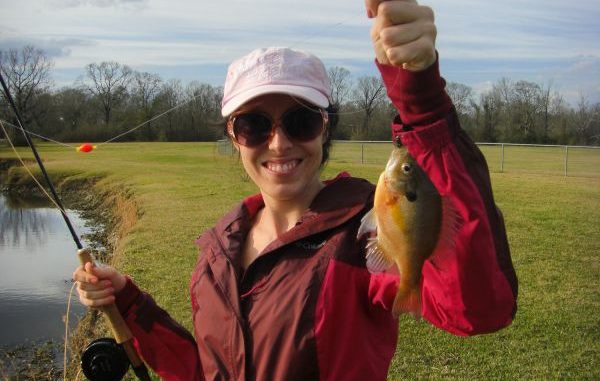
Match the hatch on small waters
One of the top movies of 2012 was “Life of Pi.” It’s the story of a young Indian boy named Pi, victim of a shipwreck who spends over 200 days aboard a small boat with a Bengal tiger. He survives by catching fish.
In an odd similiarity, I once spent two days aboard a kayak with an LSU Tiger shirt on, catching fish.
Come to think about it, 200 days is a lot. That’s almost as many days a year as I spend fishing local ponds.
For those who love “the quiet sport,” small waters offer an array of opportunities for all skill levels. For the beginner, it’s a classroom to develop casting, presentation and fly selection. For the veteran angler, it’s a chance to use ultralight tackle and target wary big fish.
Early spring is the best time for pond fishing as bass, bream, crappie and even catfish begin their spawning cycles. With rising water temperatures also comes emergence of insects, and other forage species.
How productive a pond is depends a lot on how it is managed.
My dad, who worked for the U.S. Soil and Conservation Service until retirement, used to advise folks on building and managing their ponds. A good pond is constructed with an average depth of 5 feet or more and has “bathometry” or horizontal structure to serve as holding and feeding lines.
Like a garden, a pond should be limed in winter, and fertilized in spring. Doing so increases the amount of algae and microscopic animals that become the basis of the food chain. A wider food chain — along with a diverse number of forage species — results in more bigger bass and bluegill.
If you know someone who has a private pond, one way to get access to it is to offer to help them manage their pond. Offer to lime, fertilize or help stock forage species or even game fish.
In one case, I helped a friend by building some gravel spawning beds and adding Christmas tree structures to his pond. Within a year, he was producing more big bass and bream.
Fishing small waters can be frustrating. Trophies or great numbers caught are the exception, not the rule. In a pond, a 5-pound bass is as likely to eat a small grass shrimp or a dragonfly nymph as it is to eat a small bluegill.
Because forage diversity is often lacking, pond predators are more inclined to feed selectively instead of opportunistically. I’ve seen dragonfly hatches at a local pond where the bass will feed exclusively either on the flying insect or on the larval and emerging stages of that insect. In such cases, a size 12 blue popper imitates the “dry” while a black woolybugger best represents the “wet” insect.
Speaking of dry flies, while Louisiana lacks the diversity of aquatic insects found in most states, we do have great numbers of the order Diptera (mosquitos, gnats, midges, craneflies) and even good numbers of order Ephemeroptera (mayflies).
I’ve had great afternoons catching bream on a size 16 black Adams when the skeeter hatch was on. In fact, the only problem with a mosquito hatch is mosquitos.
Terrestial insects provide bass and bream with a much more substantial meal. In late spring and summer, I fish almost exclusively with popping bugs and foam spiders. Surface flies not only catch more fish, it’s also a lot more fun to see a fish rise to eat.
Fish can be wary in small waters, especially on public ponds.
Consider adapting light leaders. For panfish flies, I often use a 7-foot leader made of 14-pound mono for the butt, a 2X midsection, and a 4X tippet. For bass flies, I often get a 9-foot trout leader rated for 2X tippet, and cut the first 2 feet off. That may seem light to some, but it works.
Some days, the insects will be dormant and bluegills and redear will feed on minnows and grass shrimp. Flies such as fluff butts and crappie candies imitate minnows. An easy-to-tie grass shrimp imitation consists of nothing more than dubbed antron on a hook.
While there are thousands of ponds in our state, most are private. Many states have “community fishing programs,” a collection of small public waters intensely managed for bank and motorless boat fishing. Louisiana isn’t one of those — yet.
However, there are numerous ponds managed by parishes across our state. Baton Rouge Parks & Recreation (BREC) has 11 stocked ponds with several more under construction.
New Orleans has a complex of ponds and bayous as part of the City Park system. Jefferson Parish has a 22-acre lake at LaFreniere Park. Both parks are teeming with bass, bluegill and Rio Grande Perch, a Texas species.
Other small waters with lots of bank access include: Dubisson Lake (Evangeline), Oil Park (Jennings), Lincoln Park (Ruston), Buhlow (Rapides), Zeemurray (Tangipahoa). There’s also ponds at several of the state parks, including Fontainbleu, Bogue Chitto, Hodges Gardens — to name a few.
Remember that ponds are where many kids get their start at fishing. Insure that they’ll have a good experience by releasing what you catch.


